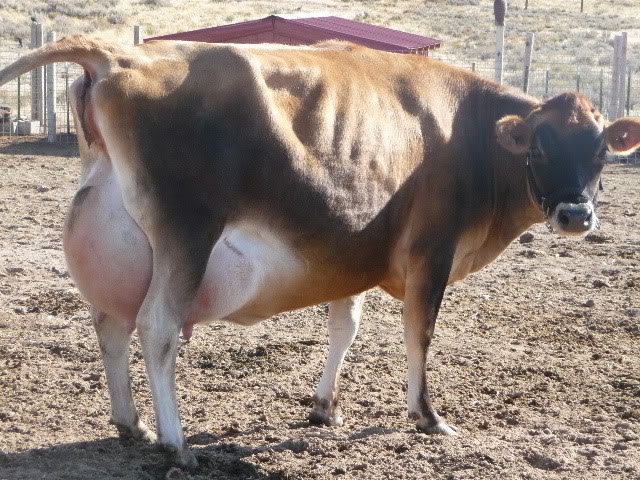Udder edema, or caked bag, in cows is the swelling of the udder and surrounding structures due to retention of fluid just prior to and during calving.
Some edema is natural to the process of pregnancy and birthing, but excessive swelling can impair the functioning of the udder and ultimately damage it.
The mechanism for udder edema is not precisely known but is thought to be a combination of heredity, nutrition prior to calving and metabolic changes natural to pregnancy.
Udder edema is frequently seen in heifers, cows calving for the first time. This could be due to immaturity in the vascular structure of the udder causing it to be more vulnerable to fluid retention. Genetics also may play a part increasing the susceptibility of the cow as it seems to “run in the family.”
Physiologically, a developing calf can restrict the flow of blood and lymph away from the udder while at the same time metabolic changes, especially hormonal fluctuations, cause an increased blood supply to the area. This combination can lead to the excessive pooling of fluid.
A good diet during the dry period of a cow is essential. The dry period refers to the non-lactating stage; she is usually dry because she is pregnant and preparing for birth. During this period high potassium and sodium intake have been implicated in causing fluid retention so should be carefully monitored. It is also crucial to limit grain intake as too much predisposes the cow for edema. Magnesium, Vitamin E and Zinc intake often need to be increased during this time.
The edema may begin in just one or two quarters of the udder. It is usually not painful and does not need to be treated. From there it can spread throughout the entire udder and surrounding areas including the abdominal area and vulva. It needs to be treated if it interferes with milking or, in a heifer, if it threatens to collapse the supporting structures of the udder.
Treatment includes massages and hot compresses on the affected areas. This stimulates blood flow which aids in the removal of the excess fluid. Manual diuretics and cortico steroids have also proved useful in reducing the edema. Through all this it is crucial that the cow be completely milked every time.
Udder edema does not seem to be caused by just one factor, but rather a combination of factors: genetic predisposition, management and nutrition, that lead to the overall accumulation of fluid in the affected areas. Prevention through proper nutrition is the easiest route to take, but treatment is possible and successful in the controlling of this condition.
***********
-
Increasing pressure, caused by fetal growth, results in a restriction of blood and lymph flow away from the udder in late pregnancy. This occurs concurrently with an increased blood flow to the udder. Smaller blood vessels and a reduced fluid flow is likely the reason why heifers are more prone to udder edema than are cows.
-
There is a drop in blood proteins as the cow transfers immunoglobulins (proteins) to colostrum. This is thought to increase the permeability of the blood vessels allowing an increase in fluid buildup.
-
Changes in hormone levels are also believed to play a role in udder edema.








